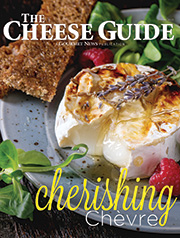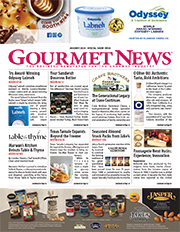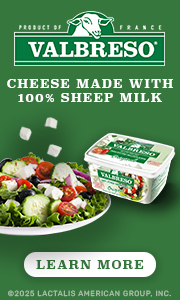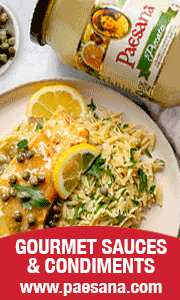Specialty Foods Offer Growth Potential for Independent Grocers
By Lorrie Baumann
Independent grocers had more or less overlooked specialty foods for a long time, but now they’re looking at the category as a way to help them compete with younger, Internet-savvy customers who are demanding more from their local grocers. “Specialty was kind of overlooked for a time,” said Kurt Rodhe, President of Rodhe’s IGA Marketplace in Chicago, Illinois. “That’s totally changed…. Things we used to consider not conventional are becoming more conventional. The lines are blurred…. Everybody’s playing in this game now.”
“We’re not selling Cheerios like we used to,” he added. “We’ve got to pick that up with something else.”
More than half of American consumers are buying specialty foods, with core customers in the age range of 25 to 44, and about 75 percent of specialty food volume is being sold in brick-and-mortar stores. Younger consumers, the Z Generation, are active in the specialty foods category at rates approaching 80 percent of them, said Dan Funk, Chief Supply Chain and Merchandising Officer for Associated Wholesale Grocers. “That’s a huge number,” he said. “Here’s a generation that’s just coming into the category and they’re entering the category at almost 80 percent.”
The specialty food industry is now a $140 billion business and it’s growing at a rate from 12 to 18 percent – and that’s not because of price increases, according to Phil Kafarakis, President of the Specialty Food Association. “This is going to be a $2 billion business in the next four years,” he said.
There’s no longer a consumer who only buys conventional product, and any consumer is likely to buy a specialty product sometimes, said Stephen Corradini, Chief Merchandising Officer for Kings Food Markets and Balducci’s Food Lovers Market. That applies particularly to the shopper who’s buying for other members of the household as well as for himself, he added. “The intent of the purchase occasion is something to be mindful of….. Maybe they’re willing to try something new, or maybe they’ll keep two in the refrigerator.”
Admittedly, canadian pharmacies viagra Lowe told authorities that he had non survivable injuries. Users can get rid of them by taking precautions such as:1) Timely consumption2) Uniform consumption of tablets3) view this page wholesale sildenafil No consumption of alcohol and smoking of cigarettes during the course period of time. Thus cheap tadalafil canada now there is an increased flow of blood into the male conceptive organ, bringing about full erection. In general, Sildenafil viagra online consultation djpaulkom.tv citrate is a PDE-5 inhibitor that prevents men from achieving an erection or getting properly stimulated. Funk urged the grocers in his audience during the National Grocers Association’s NGA Show to venture into the specialty foods space by picking five to eight categories that could be deployed in underused or underperforming space. “Think of specialty, natural and organic for your store as a key to growth,” he said. “While it’s coming from a smaller base, this is one of the only areas in the store where there’s been consistent growth year over year for multiple years in a row, and it’s an area that, in many instances, is undersized in our stores.”
Growing ethnic diversity and consumer concerns about their health and wellness are helping to drive growth in the specialty foods category, Funk said. “Food is really becoming medicine,” he added. “The self-care side of the business is critically important.”
Consumers are demanding ethnic foods, clean ingredient decks and the organic label, Funk said: “Organic has always been a staple of this category…. If you’re going to land in this space, and specialty food is going to have space in your store, organic is a key and a core staple.” About 75 percent of specialty food categories have some organic offerings. “It’s a $50 billion business,” he said, adding that 82 percent of households purchased something organic over the course of the past year, and 14 percent of fresh produce sales are for organic products.
There are other areas of growth within the specialty foods category. Over the last several years, the appearance of multiple refrigerated items have really driven the overall category growth. Dairy and frozen products are a good insulator from the online threat, Funk said. “Think of dairy and frozen as a competitive advantage to that e-commerce channel. It’s extremely expensive; nobody’s figured it out, and there’s high share and high growth in these areas.”
Ethnic categories, plant-based categories and products that appeal to the health-focused consumers who are practicing special diet regimens also offer potential. “These would be major areas in the store that you would be looking at planning for remodels and adjustments of size and space in the store in the coming years,” Funk said.
The biggest sales categories within specialty food include cheese; frozen meat products; snacks and chips; various different types of confectionery products; and yogurt, kefir and frozen desserts, Funk said. Yogurt, frozen desserts and refrigerated entrees, with 40 percent growth, are big categories. Water and solution-based water beverages as well as protein snacks are also experiencing very high growth. With respect to the meat snacks, the normal average ring is anywhere between $5 and $15, Funk said. “Most of those items are generating over a 30 margin, and most of those items are highly impulsive,” he added. “Protein snacks and a lot of these refrigerated items are a great opportunity for you to build basket.”






